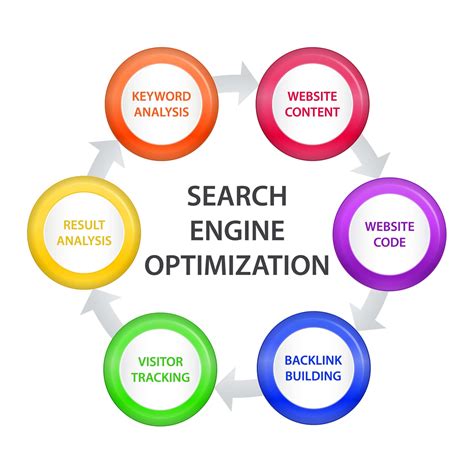Standing out in the digital world has become increasingly challenging as businesses strive to establish their presence, engage their audience, and ultimately drive meaningful results. In this era of ever-evolving algorithms and information overload, a well-crafted content marketing strategy has emerged as the backbone of successful online campaigns.
Creating captivating content is crucial, but without a well-thought-out approach to market it, your efforts might go unnoticed in the vast sea of online content. To truly make an impact, it is paramount to understand the intricacies of content distribution and promotion, leveraging various channels and techniques to amplify your message.
Discover how you can navigate the intricate world of content marketing and carve a path towards success. By employing a strategic blend of creativity, consistency, and analytics, you can maximize your brand's visibility, increase engagement levels, and ultimately drive conversions.
Unleash the power of social media platforms. With billions of active users, platforms such as Facebook, Instagram, and Twitter offer an invaluable opportunity to reach and connect with your target audience. By tailoring your content to suit each platform and utilizing features like hashtags and influencer collaborations, you can organically expand your reach and foster a community of loyal brand advocates.
Understanding Your Target Audience

In order to create a compelling and effective content marketing strategy, it is crucial to have a deep understanding of your target audience. Identifying and comprehending the needs, preferences, and behaviors of your audience will allow you to tailor your content to their specific interests, increasing engagement and ultimately driving successful results.
- Research: Start by conducting thorough market research to gain insights into your target audience. Look at demographic data, such as age, gender, location, and income, as well as psychographic information, including their interests, motivations, and pain points.
- Customer Journey: Map out the customer journey from initial awareness to conversion and beyond. Understand the various touchpoints and interactions your audience has with your brand throughout this process, and identify opportunities to deliver valuable content at each stage.
- Segmentation: Divide your target audience into distinct segments based on similar characteristics or behaviors. This segmentation allows you to create personalized content that resonates with each subgroup, increasing relevance and engagement.
- Feedback: Actively seek feedback from your audience through surveys, social media listening, or direct communication. This feedback will provide invaluable insights into their needs, preferences, and expectations, enabling you to refine and improve your content marketing efforts.
By understanding your target audience, you can create content that truly speaks to them, establishes a connection, and drives them to take desired actions. With a deep understanding of your audience, you'll be able to craft content that is relevant, valuable, and impactful, leading to a successful content marketing strategy.
Developing an Effective Content Plan
In this section, we will explore the key steps involved in crafting a cohesive and impactful content plan that drives results for your business.
Firstly, it is crucial to define your target audience and understand their needs and preferences. By gaining a deep understanding of your audience, you can tailor your content to effectively resonate with them and provide value.
Next, conducting thorough keyword research will help you identify the topics and keywords that are relevant to your audience and align with your brand's objectives. This will ensure that your content is optimized for search engines, increasing its visibility and attracting organic traffic.
Once you have identified your target audience and relevant keywords, it is important to develop a content calendar or editorial plan. This will help you map out the topics, formats, and publishing schedule for your content, ensuring a consistent flow of high-quality materials.
Furthermore, creating engaging and valuable content is key to capturing and retaining your audience's attention. Experiment with different formats such as blog posts, videos, infographics, and case studies to communicate your message effectively and cater to different learning preferences.
Lastly, continuously monitoring and analyzing the performance of your content will enable you to measure its impact and make data-driven decisions for future improvements. Utilize analytics tools to track metrics such as website traffic, engagement rates, and conversions, allowing you to optimize your content strategy accordingly.
By following these steps and consistently delivering high-quality content, you can develop an effective content plan that engages your target audience, drives traffic, and ultimately achieves your marketing goals.
Setting Clear Goals and Objectives: A Key to Achieving Success in Content Strategy

Establishing clear goals and objectives forms an essential foundation for a fruitful content marketing approach. By defining your intentions and desired outcomes, you provide a compass that guides your efforts towards achievement and success.
Setting goals allows you to articulate what you aim to accomplish through your content marketing initiatives. Goals often revolve around increasing brand awareness, expanding audience reach, generating leads, enhancing customer engagement, or driving conversions. By setting specific, measurable, attainable, relevant, and time-bound (SMART) goals, you create a framework that enables you to measure progress, evaluate success, and make necessary adjustments along the way.
Furthermore, establishing clear objectives helps you to specify the actions required to fulfill your goals. While goals provide a broad direction, objectives break them down into actionable steps. Objectives can encompass various aspects, such as creating high-quality content, optimizing search engine rankings, leveraging social media platforms, nurturing leads through email marketing, or analyzing data to refine strategies. Clearly defining objectives helps align the efforts of your team, ensures a focused approach, and increases the likelihood of achieving desired outcomes.
In summary, setting clear goals and objectives in your content marketing strategy is crucial to driving success. By clearly defining what you aim to accomplish and breaking it down into actionable steps, you provide a roadmap that guides your efforts and helps you measure progress. Embrace the power of setting goals and objectives, and witness the impact it can have on the effectiveness and efficiency of your content marketing endeavors.
Consistently Producing High-Quality Content
In the world of digital marketing, creating valuable and engaging content is a critical component for achieving long-term success. Establishing a consistent stream of high-quality content plays a pivotal role in attracting and retaining a loyal audience, establishing authority in your industry, and driving organic growth. In this section, we will explore effective strategies and tactics to consistently produce exceptional content that captivates your audience and delivers measurable results.
1. The Power of Research:
Before embarking on the content creation journey, it is essential to conduct thorough research to understand your target audience, their preferences, and the content gaps in your industry. By identifying popular topics, trending keywords, and valuable insights, you can tailor your content strategy to generate maximum impact and resonate with your audience.
2. Develop a Content Calendar:
To maintain consistency and ensure a steady flow of high-quality content, it is beneficial to create a content calendar. This calendar acts as a blueprint for your content creation efforts, enabling you to plan and strategize your content initiatives well in advance. By mapping out a schedule, you can ensure timely delivery of fresh and engaging content, ultimately strengthening your brand's presence and credibility.
3. Quality over Quantity:
While producing a significant volume of content may seem tempting, it is crucial to prioritize quality over quantity. Investing time and effort into thoroughly researching, crafting, and refining your content will result in more meaningful and valuable pieces that resonate with your audience. By consistently publishing high-quality content, you will establish your brand as a trusted source of information and foster stronger relationships with your target audience.
4. Engaging Visuals and Multimedia:
In today's visually oriented world, incorporating captivating visuals and multimedia elements into your content is essential. By leveraging images, videos, infographics, and interactive elements, you can enhance the overall user experience and effectively communicate your message. Engaging visuals not only capture attention but also increase the shareability and virality of your content, expanding your reach and amplifying your brand's visibility.
5. Consistent Tone and Messaging:
Maintaining a consistent tone and messaging across all your content pieces is key to building a strong brand identity. Your content should reflect your brand's values, personality, and unique selling propositions. Consistency in tone and messaging helps to foster familiarity and trust with your audience, allowing them to connect with your brand on a deeper level.
6. Learn from Data and Feedback:
Continuous improvement is vital for sustaining a successful content marketing strategy. Actively monitor and analyze data, such as engagement metrics, click-through rates, and conversion rates. Additionally, seek feedback from your audience to gain valuable insights into what resonates with them. By leveraging this information, you can refine your content creation process and consistently produce high-quality content that aligns with your audience's preferences and needs.
Conclusion:
Consistently producing high-quality content requires careful planning, research, and a commitment to ongoing improvement. By following the strategies outlined in this section, you can establish a strong content marketing foundation that drives meaningful engagement, builds brand loyalty, and delivers impactful results.
Maximizing the Power of SEO Techniques

In today's digital landscape, it is essential for businesses to optimize their online presence and improve their visibility in search engine results. Utilizing effective SEO techniques can greatly contribute to the success of your content marketing efforts, ensuring that your content reaches and engages with your target audience.
Strategic keyword research: One of the key elements of an effective SEO strategy is conducting thorough keyword research. This involves identifying the words and phrases that your target audience is using when searching for content relevant to your business. By strategically incorporating these keywords into your content, you can increase your chances of ranking higher in search results and attracting more organic traffic.
High-quality content: While incorporating keywords is important, it is equally crucial to focus on creating high-quality content that provides value to your audience. Search engines prioritize content that is informative, engaging, and unique. By offering valuable insights and addressing the needs of your target audience, you can not only catch the attention of search engines but also establish yourself as a reliable source in your industry.
Optimized meta tags and descriptions: Optimizing your meta tags and descriptions is another effective SEO technique that can improve your content's visibility. Meta tags provide search engines with crucial information about your content, while meta descriptions serve as concise summaries displayed in search results. By crafting compelling and descriptive meta tags and descriptions, you can entice users to click on your content and increase the chances of higher rankings.
Link building: Link building plays a significant role in SEO and content marketing success. When authoritative websites link to your content, it not only improves your credibility but also signals to search engines that your content is valuable. Engaging in strategic outreach, guest blogging, and collaborating with influencers are some effective ways to build quality backlinks that can boost your search engine rankings.
Regular monitoring and analysis: Lastly, to maximize the effectiveness of your SEO techniques, it is vital to regularly monitor and analyze the performance of your content. Utilize tools like Google Analytics to track metrics such as organic traffic, bounce rate, and conversion rate. By analyzing this data, you can identify areas for improvement, refine your SEO strategy, and ensure that your content continues to reach and engage with your target audience.
By employing these SEO techniques in your content marketing strategy, you can enhance your online visibility, attract organic traffic, and ultimately drive the success of your business.
Developing a Compelling Brand Voice
Creating a powerful and distinctive brand voice is essential for effectively communicating your message to your target audience. Establishing a strong brand voice goes beyond just crafting compelling content; it involves shaping the personality, tone, and style of your brand.
1. Crafting a Unique Personality: To differentiate your brand from competitors, it is crucial to develop a distinctive personality. Consider the values and characteristics that align with your brand identity and use them as a foundation for your brand voice.
2. Understanding Your Target Audience: Identifying your target audience is key to tailoring your brand voice. Understanding their preferences, interests, and communication style will help you connect with them in a more authentic and relatable manner.
3. Consistency is Key: Maintaining consistency across all your brand messaging and content is vital for building brand recognition. Whether it's a blog post, social media update, or email newsletter, ensure that your brand voice remains consistent and recognizable.
4. Injecting Personality into Content: Your brand voice should resonate in every piece of content you create. Use language, humor, and storytelling techniques that align with your brand personality to make your content more engaging and memorable.
5. Evolving with Your Brand: As your brand grows and evolves, your brand voice may need occasional adjustments. Continuously assess and refine your brand voice to ensure it aligns with your strategic objectives and resonates with your target audience.
Remember: A strong brand voice is not just about creating content that sells; it's about building a connection with your audience and leaving a lasting impression. Embrace your brand's uniqueness, understand your target audience, and consistently express your brand personality to establish a strong and memorable brand voice.
Promoting Your Content Effectively

In today's competitive online landscape, it is crucial to ensure that your content reaches its target audience and drives desired results. Effective promotion tactics can help increase the visibility and reach of your content, leading to higher engagement and conversions.
To maximize the effectiveness of your content promotion efforts, consider the following strategies:
1. Leverage Social Media:
With the widespread use of social media platforms, it has become essential to tap into these channels to reach a larger audience. Share your content across various platforms, ensuring it is tailored to each platform's unique features and user preferences. Engage with your audience, respond to comments, and actively participate in relevant discussions to establish your brand as a thought leader and build trust.
2. Explore Influencer Collaborations:
Influencers can act as powerful amplifiers for your content by leveraging their established reach and credibility. Identify influencers in your industry or niche who align with your brand values and target audience. Collaborate with them to create and promote content that resonates with their followers, increasing the visibility and credibility of your brand.
3. Utilize Email Marketing:
Email marketing remains one of the most effective tools for promoting content. Build and maintain a quality email list by offering valuable content and incentives for subscription. Develop personalized email campaigns that target specific segments of your audience, focusing on delivering valuable insights, updates, and exclusive content to keep them engaged and encourage social sharing.
4. Optimize for Search Engines:
Ensure that your content is properly optimized for search engines to increase its online visibility. Conduct thorough keyword research to understand the search terms your target audience uses. Incorporate these keywords strategically in your content, including titles, headings, meta descriptions, and image alt tags. Additionally, focus on creating high-quality and valuable content that naturally attracts backlinks from other websites, further enhancing your search engine rankings.
5. Collaborate with Strategic Partners:
Identify potential strategic partners who share a similar target audience but offer complementary products or services. Collaborate on content creation and cross-promotion initiatives to expand your reach and tap into their existing customer base. Joint webinars, guest blogging, and co-branded content are all effective ways to leverage each other's networks and generate more visibility.
6. Monitor and Analyze Performance:
Regularly track and analyze the performance of your content promotion efforts. Utilize analytics tools to understand which channels, campaigns, or strategies are driving the most traffic, engagement, and conversions. Identify areas for improvement and make data-driven decisions to optimize your content promotion strategy continually.
By implementing these effective content promotion strategies, you can enhance the visibility, engagement, and overall success of your content marketing efforts, ultimately driving meaningful results for your business.
Engaging and Connecting with Your Target Audience
One of the key elements of a successful content marketing strategy involves actively engaging and connecting with your target audience. Building strong relationships with your audience is crucial for promoting your brand, driving customer loyalty, and ultimately achieving your marketing goals.
When it comes to engaging with your audience, it's important to understand their needs, desires, and interests. By gaining a deep understanding of your target audience, you can tailor your content to resonate with them on a personal level. This means creating content that speaks directly to their pain points, offering solutions to their problems, and providing valuable insights and information that they find relevant.
In order to effectively engage with your audience, it's essential to establish a two-way communication channel. This involves actively seeking and encouraging feedback, comments, and interactions from your audience. Responding to their comments and messages in a timely manner shows that you value their input and are genuinely interested in what they have to say.
Utilizing interactive content is another effective way to engage and connect with your audience. This can include quizzes, polls, surveys, and contests, which not only provide entertainment value but also encourage active participation. Interactive content allows your audience to feel involved and invested in your brand, fostering a sense of connection and loyalty.
An often overlooked aspect of engaging with your audience is the use of storytelling. Humans are naturally drawn to narratives, and incorporating storytelling elements into your content can captivate your audience and make your brand more relatable. By using narrative techniques such as personal anecdotes, case studies, and customer success stories, you can create an emotional connection and resonate with your target audience on a deeper level.
In conclusion, engaging and connecting with your target audience is essential for the success of your content marketing strategy. By understanding their needs, actively listening to their feedback, utilizing interactive content, and incorporating storytelling elements, you can build strong relationships, foster brand loyalty, and achieve your marketing objectives.
Analyze and Fine-tune Your Approach

In order to optimize the effectiveness of your content marketing efforts, it is essential to consistently analyze and adjust your overall approach. A successful content marketing strategy requires ongoing evaluation and fine-tuning to ensure that it remains aligned with your goals and targets the right audience.
One key aspect of analyzing your strategy is monitoring the performance of your content. This involves assessing various metrics such as website traffic, engagement rates, conversion rates, and social media interactions. By tracking these metrics, you can gain valuable insights into the effectiveness of your content and identify areas for improvement.
Another crucial aspect of analysis is understanding your audience. It is essential to regularly evaluate your target audience's preferences, behavior, and needs. By understanding their pain points and interests, you can create content that resonates with them and provides value. This can be achieved through surveys, customer feedback, or analyzing data from various sources.
Once you have gathered data and insights, the next step is to make necessary adjustments to your strategy. This may involve experimenting with different types of content, channels, or messaging, based on your analysis. It is important to be flexible and adaptive to change, as the content marketing landscape is constantly evolving.
Furthermore, it is crucial to regularly review and update your content marketing goals. By setting clear and measurable objectives, you can track progress and identify areas in need of improvement. Continuously refining your goals helps you stay focused and ensures your strategy remains aligned with your overall business objectives.
In conclusion, analyzing and adjusting your content marketing strategy is imperative for long-term success. By monitoring performance, understanding your audience, and making necessary adjustments, you can optimize your efforts and achieve your marketing objectives.
FAQ
What is content marketing?
Content marketing is a marketing strategy that involves creating and sharing valuable, relevant, and consistent content to attract and retain a target audience.
What are the benefits of having a content marketing strategy?
A content marketing strategy can help businesses increase brand awareness, drive traffic to their website, generate leads, build customer trust and loyalty, and establish authority in their industry.
How can I create valuable content for my target audience?
To create valuable content, it is important to understand your target audience's needs and interests. Conduct research, analyze data, and gather feedback to identify topics that resonate with your audience. Then, develop content that provides useful information, solves problems, or entertains your audience.
What are some effective content promotion strategies?
Some effective content promotion strategies include leveraging social media platforms, collaborating with influencers, optimizing content for search engines, engaging with online communities, and utilizing email marketing.
How can I measure the success of my content marketing strategy?
You can measure the success of your content marketing strategy by tracking metrics such as website traffic, engagement metrics (likes, shares, comments), conversion rates, lead generation, and ROI (Return on Investment).



